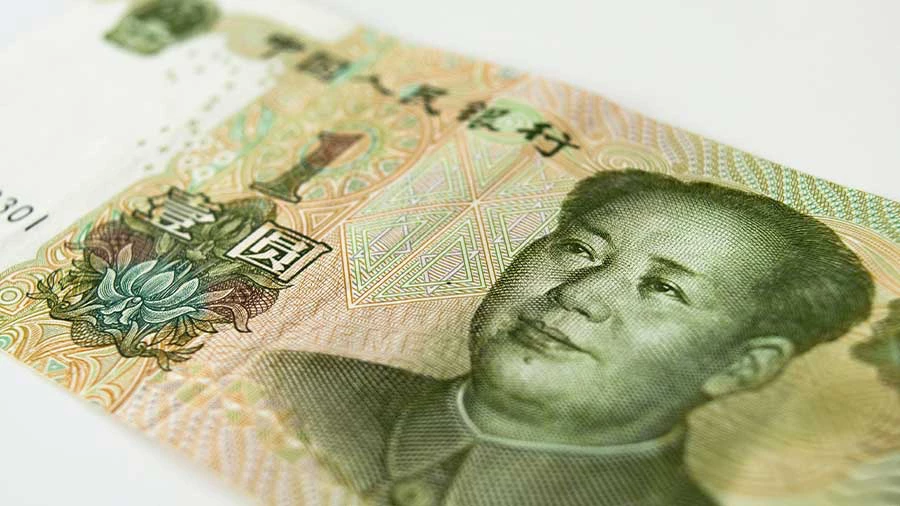Foreign investors may have been hesitant to enter China’s green industries in the past due to sops enjoyed by domestic companies, preferential government procurement practices, and inconsistent levels of transparency. Yet, this is changing as top policymakers are opening associated sectors to foreign participants while also rolling back advantages enjoyed by local firms and improving access to financing.
China's plans to transform its economy to meet high environmental standards and serve climate conscious goals may be considered ambitious, but it creates new opportunities. With advances in technology, financing, and regulatory policies, the growth potential of green industries is more attractive than ever – much of this momentum is concentrated in renewables, clean production, waste management, sustainable infrastructure, and services that support green development.
This is in line with the areas encouraged in the Catalogue of Encouraged Industries for Foreign Investment (hereinafter, the encouraged catalogue). In the presently effective 2020 version of the encouraged catalogue, around 100 items fall into the scope of green industries, accounting for nearly one-fifth of the total sectors where foreign investment is encouraged. This trend persists in the exposure draft of the 2022 version of the encouraged catalogue.
In this article, we investigate some of the highlighted industries that offer new opportunities to foreign investors by reviewing market trends, China’s green and low-carbon plans, and the country’s foreign investment policies.
Renewable energy
Along China’s path to reach its ambitious carbon reduction targets, a rapid and effective shift of power generation from fossil fuels to renewable energy sources will be unavoidable, as this sector is responsible for 52 percent of carbon emissions in the country, higher than the global average of 41 percent.Despite China’s dominance in renewables and the country’s proliferation of renewable energy sources, it is still far from replacing fossil fuel sources. In 2021, electricity generated from renewables reached 2.48 trillion kWh, equivalent to 29.9 percent of total electricity use that year. To double electricity production from renewables, Zhang Xiliang, a climate modeler at Tsinghua University, projected that China will need to increase solar power generation 16-fold, wind power ninefold, nuclear power sixfold, and hydroelectricity twofold. Even though China is already a global leader in the area, it will need to spend trillions of dollars on renewable energy sources in the coming decades, presenting huge opportunities for foreign investment.
To be more concrete, China has launched a plan to build 455 GW of solar and wind energy capacity in the country’s vast desert regions. The plan targets to install 200 GW of capacity by 2025 and an additional 255 GW by 2030, of which about 60 percent will be solar, and 40 percent will be wind. Further, including the desert project, China will install 500 GW of wind and solar by 2025 and 700 GW by 2030, which would put its total installed capacity of wind and solar at 1,700 GW.
For foreign investors, China’s renewable energy market has felt intimidating to enter in the past, due to the market share of domestic companies, government procurement practices, and inconsistent levels of transparency. Yet, the below facts and trends offer fresh scope to enter this sizable market:
- The energy sector prioritizes low costs, and innovation in technologies like solar panels has been relatively slow. While Chinese companies dominate the market share in many of these areas, they do not always possess the advanced technology required for cost
- China is gradually removing subsidies for the renewables sector to even the playing field between domestic and foreign companies as markets and technology
- Innovation with green and sustainable applications is expected to accelerate as countries around the world adopt renewables. The importance of producing industry-leading technology with scalable applications will only grow bigger – and China presents a great opportunity for market exploration in this regard.
Foreign enterprises with technological and quality advantages shall gain new development opportunities, especially in the commercial and industrial application of renewables.
Renewable sectors that are encouraged for foreign investment:
- Construction and operation of new energy power stations (including solar energy, wind energy, geothermal energy, tidal energy, current energy, wave energy and biomass energy, )
- Construction and operation of regional energy supply (cold and heat) projects driven by renewable energy resources
- Construction and operation of biogas projects
- Manufacturing of new energy power generation equipment in set or key equipment
- Development and application of the complementary system for power generation with gas and renewable resources
- R & D as well as application in the production of large energy-storage technologies (thermal battery, pumped storage technology, air energy storage technology, wind power and heating after midnight, )
Hydrogen industry
The Chinese government has identified the hydrogen industry as one of six industries of the future, and recently released plans that underscore its importance for both energy and industrial development.In March 2022, the National Development and Reform Commission (NDRC) and National Energy Administration (NEA) issued the Medium and Long-term Development Plan for Hydrogen Energy Industry (2021-2035), making it clear that China wants to take a leading role in developing the nascent green hydrogen (hydrogen made using renewables) market:
- By 2025: The plan calls for producing 100,000- 200,000 tons of green hydrogen annually, up from 6.6 tons currently, and getting 50,000 hydrogen fuel cell vehicles on the road – up from 7,700 as of
- By 2035: China should form an industrial system for hydrogen energy and a system for applying hydrogen energy, including for transportation and energy
China is already the world’s largest hydrogen supplier, producing about a quarter of global output. The China Hydrogen Alliance projects the output value of China’s hydrogen industry to reach RMB 1 trillion (US$157.44 billion) in value as early as 2025.
Nevertheless, China's hydrogen energy industry is still in the early stage of development, which is lagged in industrial innovation and technologies. Meanwhile, less than 20 percent of China’s hydrogen production is green at the moment – China produces about 60 percent of its hydrogen from coal (brown hydrogen) and about 25 percent from natural gas (gray hydrogen). The growth potential for green hydrogen is huge.
The 2020 version of the encouraged catalogue also includes hydrogen energy and its upstream and downstream industries as "encouraged sectors", which further motivates foreign capital to participate in the development of China's hydrogen energy sector.
Among others, in November 2020, the British traded multinational energy company Shell announced the establishment of a joint venture (JV) company in Zhangjiakou, Hebei Province to invest in a green hydrogen production project with a capacity of 20,000 kW. In December 2020, Shell signed a strategic cooperation agreement with Jiaxing city in Zhejiang province, under which the two sides will cooperate in hydrogen energy and other new energy fields.
Besides hydrogen energy production, storage, and transport, many opportunities for foreign investors stand to come in the form of application, such as in hydrogen fuel cells. In 2020, for example, the Japanese auto company Toyota set up a JV with the Chinese hydrogen fuel cell maker Beijing SinoHytec to manufacture fuel cells for the Chinese market.
Foreign investors with specialty and experience in hydrogen industrial chains are recommended to pay attention to the developments in this sector.
Hydrogen sectors that are encouraged for foreign investment:
- Production, storage, transportation, and liquefaction of hydrogen fuels
- Manufacturing of equipment for preparation, storage and transportation, and inspection system for hydrogen energy
- Construction and operation of hydrogenation stations
- R&D and manufacturing of hydrogen cycle pumps, hydrogen ejectors, 70MPa hydrogen cylinders, on-board hydrogen concentration sensors, and fully wound carbon fiber cylinders for vehicle compressed hydrogen plastic inner bladder
- Manufacturing of fuel cells
New energy vehicles
Driven by government support and policy incentives, China has already been the world’s largest NEV producer and consumer, hosting over 90 percent of global investment for both original equipment and components.In 2021, China sold 3.52 million units of NEVs, up 181 percent from 2020 and exceeding the total sale of the previous three years. This growth trend of NEVs is expected to continue, with China striving to reduce carbon emissions in all fields and green consumption getting more recognition in the consumer market.
According to the NEV Industry Development Plan (2021-2035) released by the State Council, the sales of NEVs in China will account for 20 percent of the domestic auto market, marking a major turning point for the NEV industry as it becomes more market-driven and the industrial supply chain begins to stabilize.
For foreign investors, the cap on the share ratio of foreign investment in NEV manufacturing was lifted as early as 2018. And as of January 1, 2022, the restriction that one foreign investor cannot establish more than two JVs in China to manufacture the same type of vehicles has been removed. Thus, China’s NEV sector is now completely open to foreign investors.
In addition to whole car manufacturing, many of the upstream and downstream industries that are part of NEV supply chains are encouraged for foreign investment.
According to the 2020 version of the encouraged catalogue, foreign investment is especially welcome for research and development (R&D) and manufacturing of key parts and components of NEVs, and the manufacturing of charging piles and charging piles for energy storage. For the former, the 2020 encouraged catalogue has provided a very detailed breakdown of the key parts and components of NEVs that are encouraged for foreign investment, with parameter requirements of each industry specified. For example, for cathode materials of batteries, the encouraged catalogue required that the specific capacity should be no less than180mAh/g and the cycle life should be 2,000 times with not less than 80 percent of initial discharge capacity.
Most of the listed industries are those where there are still performance gaps between domestic and foreign products. As the NEV sector becomes more market-driven, helped by government efforts to level the playing field for all participants, foreign investors will have more chances to take a bigger bite of this giant market.
NEV sectors that are encouraged for foreign investment:
- Design and manufacturing of special production equipment for power batteries for automobilesR & D and manufacturing of key parts and components of new energy vehicles: monomers of energy-based power batteries; cathode materials of batteries (specific capacity ≥ 180mAh/g, cycle life of 2,000 times with not less than 80% of initial discharge capacity) and precursor materials of batteries, anode materials of batteries (specific capacity ≥ 500mAh/g, cycle life of 2,000 times with not less than 80% of initial discharge capacity), separators of batteries (thickness ≤ 12μm, porosity 35%? 60%); battery management systems, motor controllers, and electronic control integration of electric vehicles; motor system for driving of electric vehicles (high-efficiency area: 85%, efficiency in working area ≥ 80%), vehicle DC/DC (input voltage 100V? 400 V), high power electronic devices (IGBT, voltage class ≥ 750V, current ≥ 300A); plug-in hybrid electromechanical coupling drive systems; fuel cell engines (mass specific power ≥ 350W/kg), fuel cell stacks (volume specific power ≥ 3kW/L), membrane electrodes (platinum consumption ≤ 0.3g/ kW), proton exchange membranes (proton conductivity ≥ 0.08S/cm), bipolar plates (metal bipolar plate thickness ≤ 1.2mm, and other bipolar plate thickness ≤ 1.6mm), low platinum catalyst, carbon paper (resistivity ≤ 3mω · cm), air compressors, hydrogen cycle pumps, hydrogen ejectors, humidifiers, fuel cell control systems, booster DC/DC, 70MPa hydrogen cylinders, on-board hydrogen concentration sensors; heat pump air conditioners for electric vehicle; special 32- bit or more chips for motor drive control (at least 2 hardware cores with main frequency of no less than 180MHz, with hardware encryption functions, etc.); integrated electric drive assemblies (power density ≥ 2.5kW/kg); high speed reducers (maximum input speed≥ 12,000 rpm and noise below 75dB)
- Manufacturing of charging piles and charging piles for energy storage
- Design and manufacturing of special production equipment for power batteries for automobiles
Carbon capture, utilization, and sequestration (CCUS)
Carbon capture, utilization, and storage (or sequestration) (CCUS), also termed as carbon capture, utilization, and sequestration, is an important emissions reduction technology that can be applied across the energy system.CCUS technology involves capturing carbon dioxide (CO2) from fuel combustion or industrial processes, transporting this CO2 via ship or pipeline, using it as a resource to create valuable products or services, or storing it in the form of mineral carbonates in geological formations or in deep ocean masses for an indefinite period of time. Thus, this technology is of high relevance for countries committed to reducing carbon emissions but anticipated to remain dependent on fossil fuels in the short term.
In China, CCUS technology will play an important role in helping the country meet its carbon commitments, serving as one of the few solutions to tackle emissions from heavy industry and to remove carbon from the atmosphere.
According to the Global Carbon Capture and Storage Industry report released by Global Industry Analysts in February 2022, by 2026, China’s CCUS market size is forecast to reach US$482 million, trailing an annual growth rate of 11.4 percent, and the industrial separation segment is forecast to reach US$293.9 million.
CCUS is still at an early phase of development in China but is bound to gain prominence. Progressive policy frameworks and sustained government support will pivot China to become among the fastest growing regional CCUS markets.
Amid the intensified government push for net zero emissions and recent corporate trends of voluntary commitments to achieve this, businesses have been encouraged to develop carbon-offsetting projects and services for their own use or sale to third parties.
CCUS sectors that are encouraged for foreign investment:
- Development of CCUS technology and services
- Construction and operation of CCUS projects
- Manufacturing of equipment for capture, use, storage, and monitoring of carbon dioxide
Other green services
China’s green transition has created new green services industries that benefit the environment or conserve natural resources, such as ecosystem services, contract energy management, contract water conservation management, third-party environmental pollution treatment, and environmental custody services.As per market consultancy Askci Corporation, the size of China's energy conservation service industry was RMB 582. 6 billion (US$90.3 billion) in 2020, with 6,859 companies (showing a growth of 4.8% year-on-year) and 760,000 employees (an increase of 25.4% year-on-year) engaged in the industry.
As most green services industries require high innovation capabilities and technology advancement, a lot of the green services are encouraged for foreign investment.
Foreign firms with experience and expertise in this area have already been actively participating in the Chinese market. One example is the Veolia Group of France, which has established an office in China to offer environmental services. German and UK companies engaging in green services, such as ALBA Group and ERM, are also trying to promote the export of their technologies to China considering the tremendous growth potential of this sector.
Green services that are encouraged for foreign investment:
- R&D of offshore oil pollution cleaning and ecological restoration technology and the relevant product development; prevention and treatment of seawater eutrophication, marine life explosive growth disaster; coastal zone ecological environment restoration technology
- R&D and application of technologies for energy conservation, environmental protection, and recycling economy
- R&D and application of technologies for recycling and comprehensive utilization of resources and for recycling of emissions and discharges from enterprise production
- R&D of environmental pollution treatment and monitoring technology
- Development of clean production technology and services
- R&D and utilization of integrated technologies for land conservation and outdoor environment, energy conservation and utilization of water resources, material conservation and utilization of material resources, and indoor environment and operational management of green buildings
- R&D and application of disposal technology for radioactive waste
- Construction and operation of hazardous waste utilization and disposal facilities and technical consultancy services
- R&D of technologies for prevention and control of desertification and desert restoration
Recycling
Recycling forms an important component of China’s plan to transfer to a green, low-carbon, and circular economy.On July 7, 2021, the NDRC released the Development Plan for the Circular Economy in the 14th Five Year Plan Period, which put extra emphasis on recycling as a means of maximizing resources use and the life cycle of products. The plan sets several hard numerical targets for the government to reach by 2025, including:
- Reaching a utilization rate of 86 percent for crop stalks, 60 percent for bulk solid waste, and 60 percent for construction waste
- Utilizing 60 million tons of waste paper and 320 million tons of scrap steel
- Producing 20 million tons of recycled non-ferrous metals
- Increasing the output value of the resource recycling industry to RMB 5 trillion (US$773 billion)
- Recycling park development
- Improving recycling and utilization of electrical waste and electronic products
- Recycling used batteries
Recycling sectors that are encouraged for foreign investment:
- Recycling and treatment of waste and used electrical and electronic products, automobiles, mechanical and electrical equipment, rubbers, metals, and batteries
- Recycling and reutilization of waste plastics
- Recycling of building wastes
- Manufacturing of equipment for recycling, treatment and reutilization of waste and used plastics, electrical appliances, rubbers, and batteries
- Manufacturing of equipment for recycling of used and waste textiles
- Manufacturing of equipment for remanufacturing of waste electromechanical products
- Manufacturing of devices for comprehensive utilization of used and waste tires
- Manufacturing of equipment for utilization of waste heat, pressure, and gas
- R&D and application of technologies for energy conservation, environmental protection, and recycling economy
- R&D and application of technologies for recycling and comprehensive utilization of resources and for recycling of emissions and discharges from enterprise production
Energy storage
Energy storage will be crucial in China’s green transition, as the country needs an advanced energy-storage system to respond to the challenge of power-generation fluctuations via renewables and to facilitate the development of the local EV market.China has set goals to boost its non-pumped hydro energy storage capacity to around 30GW by 2025 and 100GW by 2030. Achieving this goal would require enhanced government supports and vigorous investment to the sector, which is expected to drive the boom of the strategic energy storage industry.
Foreign investors are generally not restricted to access this sector while R&D and application of large energy-storage technologies are especially encouraged for foreign investment.
Challenges and solutions
Investing in green industries in China offers significant, but often difficult to capture, opportunities.On the one hand, China has ambitious plans to decarbonize and become a world leader in green technology, leading to numerous investment opportunities and incentives to grow related sectors. On the other hand, many green industries, such as renewables, have traditionally been dominated by state-owned enterprises or domestic companies that receive subsidies, which undercut the foreign competition.
Foreign investors must therefore be strategic when entering China in this market space, such as by partnering with local companies to be more competitive.
Moreover, as with other areas where China seeks to adopt advanced technology, businesses need to tread the line between offering high demand technology and know-how while simultaneously protecting intellectual property and market status, making partner identification and pre-investment strategy all the more important.
Dezan Shira & Associates' market entry strategy advisory helps companies to choose the right market, method for incorporation, and supply chain structure that meets the needs of their local and regional operations. The firm offers best-fit alternatives to align with your business model that will enable you to seize suitable opportunities in your target industry and market of choice. For more information, please contact China@dezshira.com.
(A version of this article was first published in the China Briefing Magazine issue dated May 2022: Investing in Green and Low-Carbon China.)
























